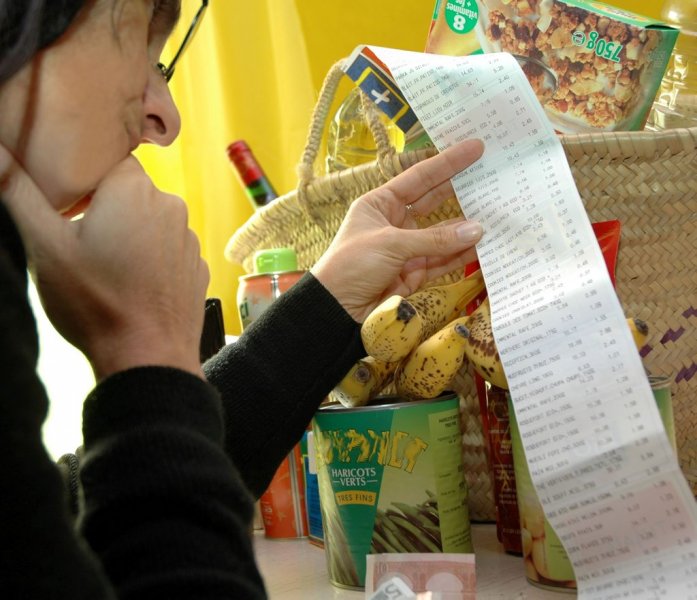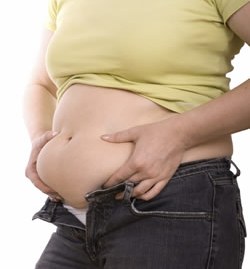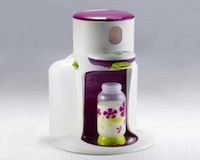Bisphenol-A is today a recognized cause of obesity, especially among girls, as demonstrated by a large Chinese study published on 12 June 2013. This publication was the subject of the article of the month that I invite you to consult on my website www.gmouton.com under the specific heading “Article du Mois”.
This environmental obesogen is found everywhere, from the most diverse plastics (included those used in the manufacturing of bottles and Tupperware), to the inner coating that lines tins and drink cans. The more acidic the content is (peeled tomatoes, fizzy sodas), the more this chemical leaches into our food.
The more you heat plastic (dishes especially made for the microwave, drink containers for tea or coffee, plastic bottles of water coolers, bottled water exposed to the sun in summer) the more contaminated the food or drink will be. There is also bisphenol-A in most thermographic paper and therefore all credit card receipts and department stores receipts: this formidable poison penetrates through the skin and is therefore especially a danger for supermarket cashiers!
 Phthalates (especially di-ethyl-hexyl-phtalate or DEHP) have been found to be directly linked to childhood obesity as evidenced by various studies published since 2012, but the phenomenon has been known with regard to adults since 2007. Increased waist circumference, insulin resistance, and type II diabetes: the whole range is implicated!
Phthalates (especially di-ethyl-hexyl-phtalate or DEHP) have been found to be directly linked to childhood obesity as evidenced by various studies published since 2012, but the phenomenon has been known with regard to adults since 2007. Increased waist circumference, insulin resistance, and type II diabetes: the whole range is implicated!
This family of endocrine disruptors are found everywhere: soft plastic toys for children, dummies, Nutella (from which it was removed in 2012), food containers, medical equipment (gloves, catheters, blood bags), flooring, many cosmetics (deodorants, shampoos, soaps, shower gels, hairsprays, nail polish), stationery (adhesives and glues), shower curtains, tarpaulin for trucks, automobile products, etc. We should not be only wary of DEHP but also of DINP, DIDP, BBP, DBP, DEP, DHCP, DNOP, and DMP: there is something for everyone! There is nothing surprising in this because the lovely name of “fragrance” generally hides the presence of one these dreadful pollutants.
 Organotins are a lesser-known family of environmental obesogens, whose unfamiliar names (like tributyltin benzoate or TBT) are also formidable pollutants, highly toxic to many marine organisms, even at infinitesimal doses. Used as “anti-fouling” paint to protect the hulls of boats, and, more generally, various structures and submerged objects, they have cruelly polluted numerous port areas and coastlines. This explains why the use of organotins on boat hulls has been banned worldwide since 2003. It is their capacity to protect surfaces exposed to water due to their biocidal action, which explains why we find them in insecticides, fungicides, acaricides and herbicides. They are still widely used today to protect glass, wood, textiles and also PVC pipes. Their obesogenic action has been demonstrated in animals (mice, frogs), but not in humans, at least not yet.
Organotins are a lesser-known family of environmental obesogens, whose unfamiliar names (like tributyltin benzoate or TBT) are also formidable pollutants, highly toxic to many marine organisms, even at infinitesimal doses. Used as “anti-fouling” paint to protect the hulls of boats, and, more generally, various structures and submerged objects, they have cruelly polluted numerous port areas and coastlines. This explains why the use of organotins on boat hulls has been banned worldwide since 2003. It is their capacity to protect surfaces exposed to water due to their biocidal action, which explains why we find them in insecticides, fungicides, acaricides and herbicides. They are still widely used today to protect glass, wood, textiles and also PVC pipes. Their obesogenic action has been demonstrated in animals (mice, frogs), but not in humans, at least not yet.
Dioxins and PCB’s are other endocrine disruptors with complex modes of action that we have already discussed in detail in blogs #24 and 25, due to their deleterious effects on thyroid function. They also exercise an obesogenic effect via other mechanisms, particularly following their attachment to certain nuclear receptors called PPARs. The end result is an increased risk of weight gain (abdominal obesity in particular), metabolic syndrome and even type II diabetes.





